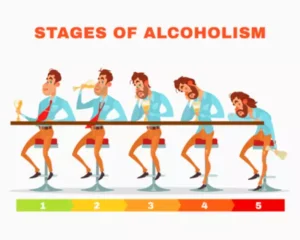
Thus, while it is vital to empirically test nonabstinence treatments, implementation research examining strategies to obtain buy-in from agency leadership may be just as impactful. Relapse Prevention (RP) is another well-studied model used in both AUD and DUD treatment (Marlatt & Gordon, 1985). In its original form, RP aims to reduce risk of relapse by teaching participants cognitive and behavioral skills for coping in high-risk situations (Marlatt & Gordon, 1985).
How euphoric recall and fading effect bias can create a false sense of control.
AVE also involves cognitive dissonance, a distressing experience people go through when their internal thoughts, beliefs, actions, or identities are put in conflict with one another. Learning healthy abstinence violation effect coping mechanisms can help you manage stress, cravings, and triggers without resorting to substance use. Rather, remember that relapse is a natural part of the journey and an opportunity for growth.
- Lapses are, however, a major risk factor for relapse as well as overdose and other potential social, personal, and legal consequences of drug or alcohol abuse.
- Furthermore, in that study the majority of relapse episodes after treatment occurred during situations involving negative emotional states, a finding that has been replicated in other studies (Cooney et al. 1997; McKay 1999; Shiffman 1992).
- Ask the client about strategies they could use now to avoid high-risk situations or external triggers as well as ways to manage internal triggers without engaging in problematic substance use.
- Although the RP model considers the high-risk situation the immediate relapse trigger, it is actually the person’s response to the situation that determines whether he or she will experience a lapse (i.e., begin using alcohol).
- This illustrates the issue of ambivalence experienced by many patients attempting to change an addictive behaviour.
What Can Clinicians Do To Counteract the AVE?
- A basic assumption is that relapse events are immediately preceded by a high-risk situation, broadly defined as any context that confers vulnerability for engaging in the target behavior.
- Support for her work has been provided by the National Institute on Alcohol Abuse and Alcoholism and the University of Washington’s Alcohol and Drug Abuse Institute.
- Future research with a data set that includes multiple measures of risk factors over multiple days could also take advantage of innovative modeling tools that were designed for estimating nonlinear time-varying dynamics [125].
Researchers have long posited that offering goal choice (i.e., non-abstinence and abstinence treatment options) may be key to engaging more individuals in SUD treatment, including those earlier in their addictions (Bujarski et al., 2013; Mann et al., 2017; Marlatt, Blume, & Parks, 2001; Sobell & Sobell, 1995). To date, however, there has been little https://ecosoberhouse.com/ empirical research directly testing this hypothesis. Advocates of nonabstinence approaches often point to indirect evidence, including research examining reasons people with SUD do and do not enter treatment. This literature – most of which has been conducted in the U.S. – suggests a strong link between abstinence goals and treatment entry.

Factors That Contribute To The Abstinence Violation Effect

Additionally, other findings suggest the influence of a DRD4 variable number of tandem repeats (VNTR) polymorphism on response to olanzapine, a dopamine antagonist that has been studied as an experimental treatment for alcohol problems. Olanzapine was found to reduce alcohol-related craving those with the long-repeat VNTR (DRD4 L), but not individuals with the short-repeat version (DRD4 S; [100,101]). Further, a randomized trial of olanzapine led to significantly improved drinking outcomes in DRD4 L but not DRD4 S individuals [100]. The dynamic model of relapse assumes that relapse can take the form of sudden and unexpected returns to the target behavior. This concurs not only with clinical observations, but also with contemporary learning models stipulating that recently modified behavior is inherently unstable and easily swayed by context [32]. While maintaining its footing in cognitive-behavioral theory, the revised model also draws from nonlinear dynamical systems theory (NDST) and catastrophe theory, both approaches for understanding the operation of complex systems [10,33].

In a similar fashion, the nature of these attributions determines whether the violation will lead to full-blown relapse. Helping the client to develop “positive addictions” (Glaser 1976)—that is, activities (e.g., meditation, exercise, or yoga) that have long-term positive effects on mood, health, and coping—is another way to enhance lifestyle balance. Self-efficacy often increases as a result of developing positive addictions, largely caused by the experience of successfully acquiring new skills by performing the activity. Future research with a data set that includes multiple measures of risk factors over multiple days can help in validating the dynamic model of relapse. Elucidating the “active ingredients” of CBT treatments remains an important and challenging goal, Also, integration of neurocognitive parameters in relapse models as well as neural (such as functional circuitry involved in relapse) and genetic markers of relapse will be major challenges moving ahead19.
When one returns to substance use after a period of abstinence, they experience a negative cognitive and affective reaction known as an abstinence violation effect in psychotherapy. An individual may experience uncontrollable, stable attributions and feelings of shame and guilt after relapsing as a result of AVE. Most importantly, 12-step programs tend to be abstinence-based, emphasizing that an authentic or high-quality recovery depends on abstaining completely from drugs and alcohol. Furthermore, 12-step programs often celebrate abstinence milestones and encourage participants to count abstinent days, leading to a perception that someone who resumes substance use is “going back to the beginning” and has not made progress in recovery.
Expanding the continuum of substance use disorder treatment: Nonabstinence approaches


